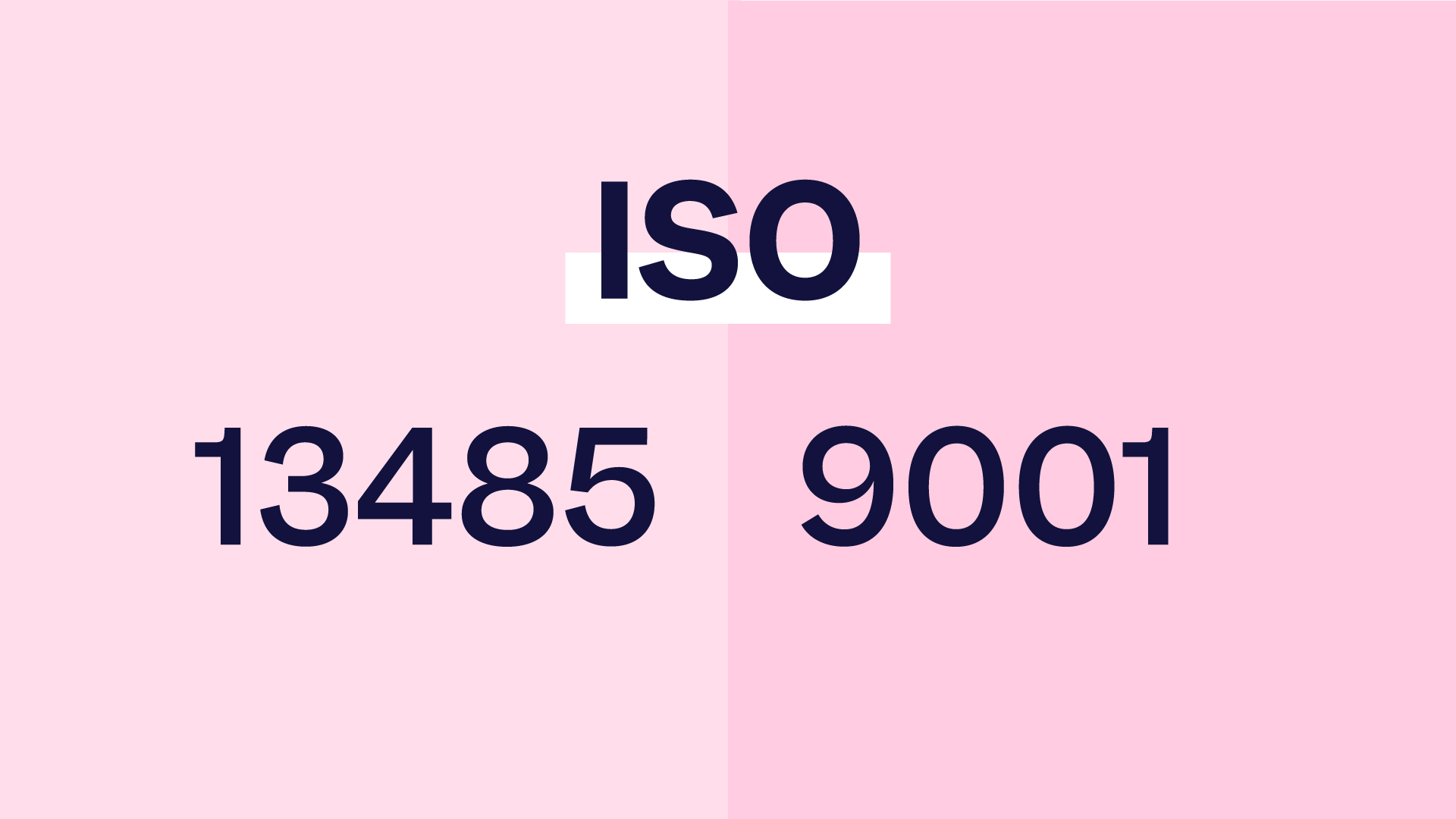
In my years working in quality, I’ve learned a few things that cause more anxiety than an upcoming audit of a newly qualified piece of equipment. That's why having a solid grasp of IQ OQ PQ: Installation Qualification (IQ), Operational Qualification (OQ), and Performance Qualification (PQ) is so important. I stress this because the ultimate goal is to build a defensible, logical case proving your equipment is fit for purpose.
In this guide, I want to share my practical approach to this topic. We'll go beyond the simple definitions to explore the difference between IQ OQ and PQ, walk through some real-world examples, and cover the best practices that I've found make all the difference in successful equipment validation.
Key takeaways
What is IQ, OQ, PQ? Key definitions explained
To understand what is IQ OQ PQ, each stage must be viewed as a distinct phase of verification with a specific objective.
- Installation Qualification (IQ): IQ is a static verification process. It involves checking the installed equipment against a list of requirements derived from manufacturer recommendations and user specifications. Activities include verifying correct delivery of the equipment and its components, confirming proper utility connections, checking the environment, and collecting all relevant documentation like manuals and calibration certificates.
- Operational Qualification (OQ): OQ is a dynamic verification process conducted after a successful IQ. The purpose is to test the functional components of the equipment. This involves challenging the system by testing controls, alarms, inputs, and outputs. Testing is often performed under "worst-case" or boundary conditions to show the equipment operates correctly across its full specified ranges.
- Performance Qualification (PQ): PQ is the final stage of qualification. It integrates the equipment into the manufacturing process to verify its performance under real-world, routine conditions. This stage uses actual production materials and is typically performed over a series of successful, consecutive production runs (e.g., three batches) to demonstrate consistency and repeatability.
Sector-specific focus
- IQ OQ PQ in pharma: In pharmaceutical production (GMP), the focus of PQ is on attributes like blend uniformity, tablet hardness, content uniformity, or sterility, proving the process consistently yields a product that meets its quality attributes.
- IQ OQ PQ medical devices: When performing IQ OQ PQ medical devices, the emphasis of PQ for manufacturing (e.g., ISO 13485) is on the reliability and precision of the final output, such as the strength of a welded seal, the dimensional accuracy of a molded component, or the sterility of a packaged device.
Steps in IQ OQ PQ validation
Equipment validation follows a logical sequence from planning to release. IQ OQ PQ are the core testing stages in this process:
- Define requirements: Formally document all equipment requirements in a User Requirement Specification (URS). This document defines the testing criteria.
- Develop the validation Plan and Protocols: Create a validation plan and write detailed IQ, OQ, and PQ protocols. These must specify all test procedures and acceptance criteria.
- Perform the Installation Qualification (IQ): Execute the IQ protocol to verify that the physical installation matches all design specifications.
- Conduct the Operational Qualification (OQ): After a successful IQ, perform the OQ to test and document that all equipment functions operate correctly per the protocol.
- Run the Performance Qualification (PQ): Execute the PQ to confirm the equipment consistently produces a quality product during routine manufacturing.
- Summarize in a final report: Compile all results into a final validation report. Approval of this report formally releases the equipment for production.
Each step builds upon the last, creating a complete and defensible qualification package.

The difference between IQ OQ and PQ
To clarify the difference between IQ OQ and PQ, the tables below provide a detailed comparison of each stage. The first table below provides a comprehensive breakdown of each phase across several key features.
The second table specifically highlights the primary goal of each stage (IQ, OQ, PQ) alongside its key regulatory drivers from both the FDA and EU GMP.


We hope that these visuals will help you clearly tell the difference between IQ OQ and PQ. Now let’s dive into some IQ OQ PQ examples so that you can see how these look like in practice!
IQ OQ PQ examples
Here is a simplified breakdown of IQ OQ PQ examples for a laboratory autoclave.
Installation Qualification (IQ):
- Verify that the autoclave model and serial number match the purchase order.
- Confirm utility connections (steam, water, power, drain) meet manufacturer specifications.
- Check that all gauges, valves, and components are installed correctly.
- Collect and log manuals, drawings, and calibration certificates for instruments.
Operational Qualification (OQ):
- Test the function of the door lock and interlock safety features.
- Verify the accuracy of temperature and pressure sensors against calibrated standards.
- Challenge the alarm system by simulating fault conditions (e.g., over-temperature).
- Perform empty chamber heat distribution studies to map temperature uniformity.
Performance Qualification (PQ):
- Execute multiple (e.g., three) successful sterilization cycles using representative loads.
- Place biological indicators and thermocouples in defined "cold spots" within the loads.
- Analyse the results to confirm consistent achievement of sterility and required cycle parameters for each run.
We hope you’ve found these IQ OQ PQ examples useful for telling the difference between each stage!
Recommended learning: Your ISO 13485 audit preparation success guide and checklist.
Best practices for equipment validation
Effective equipment validation is built on clear, methodical practices.
- Protocol-driven execution: All qualification activities (IQ OQ PQ) must be guided by pre-approved, written protocols that define the methodology, test steps, and objective acceptance criteria.
- Contemporaneous documentation: All results, observations, and deviations must be documented at the time of execution. This documentation serves as the objective evidence of the validation activity. FDA inspection data frequently shows that deficiencies in validation documentation are a common observation.
- Deviation management: A formal process must be in place to investigate, document, and resolve any deviations from the expected results or protocol steps.
- Digital system utilization: Modern eQMS platforms are designed to manage validation documentation. They provide version control for protocols, workflow automation for reviews and approvals, and centralised storage for executed records, which helps support data integrity and audit readiness.
Validation documentation carries significant regulatory and financial weight. Regulatory scrutiny is intense. 15-20% of FDA warning letters to pharmaceutical firms cite failures in Quality Unit oversight, while inadequate process validation is a top citation for medical device companies.
The financial impact of such failures is severe, with remediation for a major warning letter often exceeding $10 million. In contrast, industry reports show modern eQMS platforms can reduce documentation errors by up to 90%, boosting both operational efficiency and compliance.
Conclusion
A well-executed IQ OQ PQ sequence provides objective, documented evidence that equipment is fit for its intended use. This systematic approach is a requirement for regulatory compliance and a core component of a robust quality management system. It establishes a qualified state that serves as the baseline for the equipment's entire lifecycle.
Scilife’s Equipment Management module is designed to help. It allows you to fail-proof your processes by creating recurring maintenance and calibration tasks. The module lets you define what needs to be done, who is responsible, and when it is due, with automated notifications to make sure the right people act at the right time.
You can simplify adding new instruments with pre-configured equipment types and seamlessly link any piece of equipment to events like non-conformities or deviations. This creates full traceability, providing a complete and centralised record for each asset's entire lifecycle.
.jpg)







